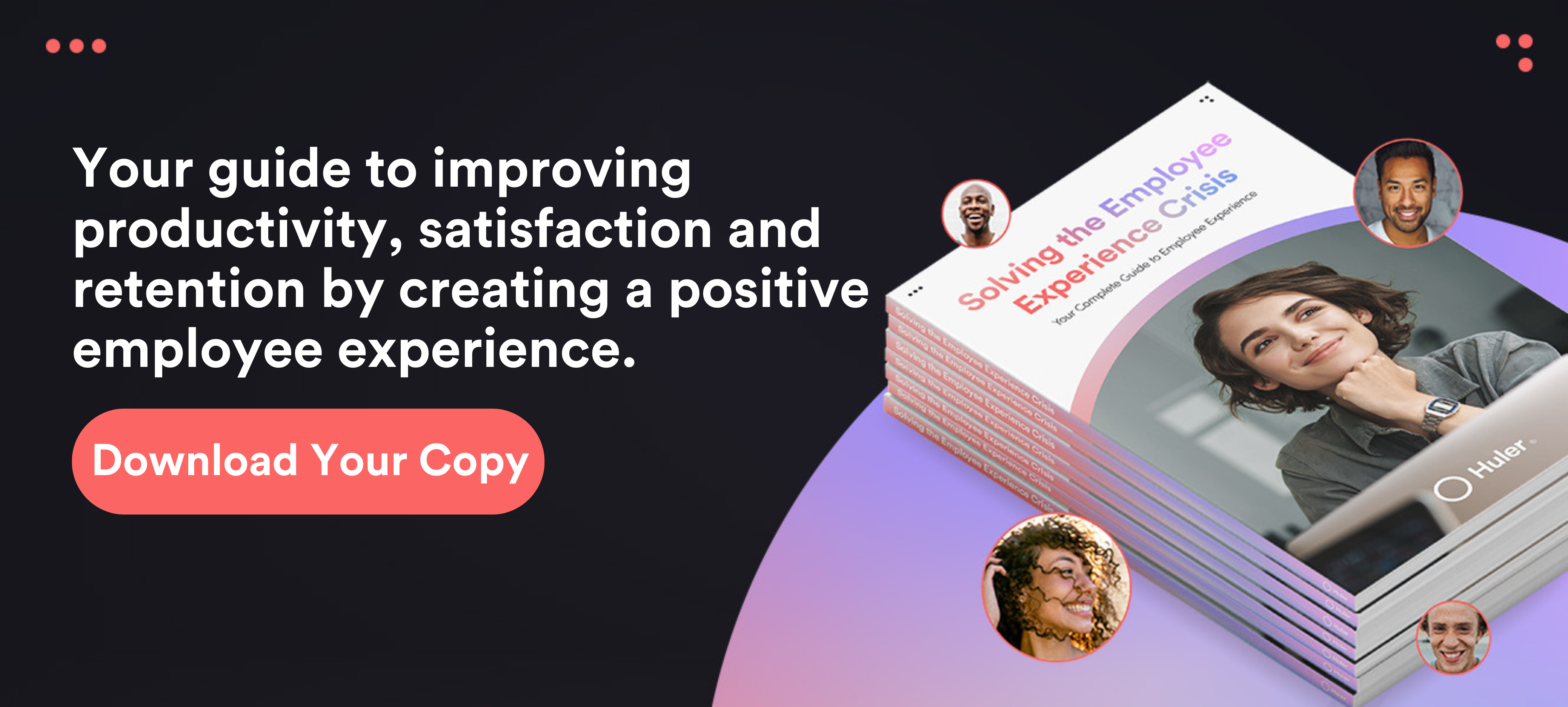Technology has radically transformed society, culture and our daily lives over the past two decades. From the internet to mobile phones and beyond, since the start of the millennium technology has quickly evolved to become more personal, portable and accessible.
Safe to say there’s not one corner of our lives technology hasn’t touched. Now it is in our homes, our pockets and our workplaces. It has changed how we consume media, communicate, get things done, wind down, socialise, feel about ourselves, think, eat, exercise and form relationships.
Sounds great doesn’t it? And as a work tech company, we’re with you 100%. Technology is pretty great. But (isn’t there always a but?) it’s not the be all and end all. Not by a long shot. Instead, we must remember what it means to be human in order to reach our full potential in a technology driven world.
The Great Enabler
Technology is a great enabler. Take smartwatches and fitness trackers as an example. These devices collect all sorts of data including our heart rate, sleep patterns, daily steps, weight, height, location, gender and food intake – among other things.
Having access to this data helps us make better decisions about our health, set realistic goals and track our progress. In some cases, they even go as far as giving us a physical nudge to remind us to move our bodies or drink water.
What they don’t do is the actual work required to make a change. If you’re overweight and unfit, just wearing a fitness tracker won’t help you lose weight or run a marathon. Eating healthily and training regularly will.
Similarly, employee engagement platforms and software can be a fantastic way of understanding your workforce and what makes them tick. But they aren’t the silver bullet you might imagine. Solving problems takes more than just fancy tech. It needs a human touch too.
Is Big Brother Watching You?
Back in 2018, Gartner surveyed 239 large corporations and found that more than 50% of them were using some type of ‘nontraditional’ monitoring techniques. These techniques include analysing the text of emails and social media messages, gathering biometric data and looking at how employees utilise their workspace.
Corporate surveillance isn’t a new thing. It’s fairly common for businesses to monitor use of corporate assets such as computers, telephones, internet usage and emails for both security and productivity reasons. That being said, it seems since the work from home mandate was issued in early 2020, monitoring employees in order to track productivity in particular has become more popular (and invasive) than ever.
From always on webcams and keyboard tracking to employee engagement software, we’re becoming obsessed with monitoring and maximising productivity, employee engagement and efficiency of remote teams. And why not? When the majority of your workforce isn’t at the office, how do you know they are being productive and staying aligned with company goals? Are you just supposed to wait until standards slip?
No, getting valuable insights into how, when and where employees work is a great way to stay on track. But the rapid adoption of this kind of technology brings about its own problems that we must address in order to get the most from our people, such as:
- How is employee data being tracked and used?
- Are monitoring tools being used in lieu of trust?
- How do employees feel about it?
- Are we focusing on the right metrics in relation to productivity?
While your employees are no strangers to sharing their personal information with third parties, they are becoming more concerned about their privacy and the ways in which sensitive data about them is being used.
Notably, in 2021 Apple rolled out App Tracking Transparency to its iOS 14 update. This change prompts users to give permission to apps to track their activity across other apps and the web. According to early research, people are giving apps permission to track their behaviour just 25% of the time.
While implementing employee monitoring software and always on webcam policies might seem like a quick and easy way to keep tabs on your workforce, you risk alienating employees who are uncomfortable with it. Yes, technology is a fabulous way to keep everyone connected and aligned, but not without key factors such as trust in the mix too.
Technology & Trust
Trust in the workplace is vital – and it works both ways. Employees should have confidence in their managers to support them while steering the ship in the right direction. Similarly, leaders should have confidence in the abilities and motivations of their workforce.
A culture of mutual trust brings about many benefits, including:
- Increased morale and motivation
- Better teamwork and collaboration
- Improved efficiency
- Better decision making
- Increased loyalty
- Lower stress levels
- Improved working relationships
- Elimination of workplace silos
- Better innovation and creativity
- Higher employee performance
While some monitoring tools can give you a superficial insight into what your employees are doing, you’re likely not getting the full picture.
Always-on webcams, for example, might be great for keeping a physical eye on your people but they also communicate to your teams that you don’t trust in their ability to work autonomously, no matter how much you might insist that it’s a measure to combat isolation and loneliness while working from home. This might result in employees being physically present at their workspace, but that doesn’t mean they are at their most productive or engaged.
In short, using technology as a way to constantly monitor output is likely to cause your people to disengage further, even to the point of leaving altogether. Instead we should be empowering employees to be accountable and tapping into their intrinsic motivators to get the most out of them.
Does that mean there’s no room for employee monitoring and data collection? Absolutely not! Getting an inside look into how employees work and feel is vital to making changes that positively impact both your people and the business. It’s how you do it and what you do with the data that matters. For example, employee surveys are a transparent way to get employee feedback without eavesdropping on their conversations. Providing you act on the feedback they’re also a fantastic way to show employees that you value their contributions and want to actively listen to them.
Finding A Balance
Workplace technology shouldn’t define company culture. Rather, it should enable employees to be productive, efficient, collaborative and communicative.
With so many different technologies available to us now, it’s probably time to be more selective about the software and platforms we use in the workplace and transparent about why we need it and how we plan to use it. Without doing so, we risk just using these types of technologies as sticks to beat people with, rather than tools to boost efficiency and productivity.
Since 2020, the way we work has changed, and it continues to evolve all the time. As the lines between work and personal life become increasingly blurred, employees want more flexibility, transparency and autonomy. Similarly, employers are expecting more of their people in terms of engagement and productivity.
For both to align, employees and their managers need to agree on a number of core fundamentals and trust one another to be on the same page, as well as putting a digital workplace strategy in place to support them. This includes leveraging data to improve ways of working such as:
-
- Giving employees access to what they need, when they need it
- Enabling flexibility around where, when and how work is done
- Focusing on output over time spent on a task
- Asking for (and listening to) feedback
- Personalising the employee experience and touchpoints
- Building a culture of accountability
To help with this, we built HulerHub, a digital workplace for forward thinking businesses. The cloud-based platform is designed to enable employees to work from anywhere without the need for invasive Orwellian software. From internal communications to productivity hacks, HulerHub gives employees the freedom to become architects of their own work day while breaking down barriers that lead to siloed working practices.
To give it a whirl, book a demo with our Customer Success team.







